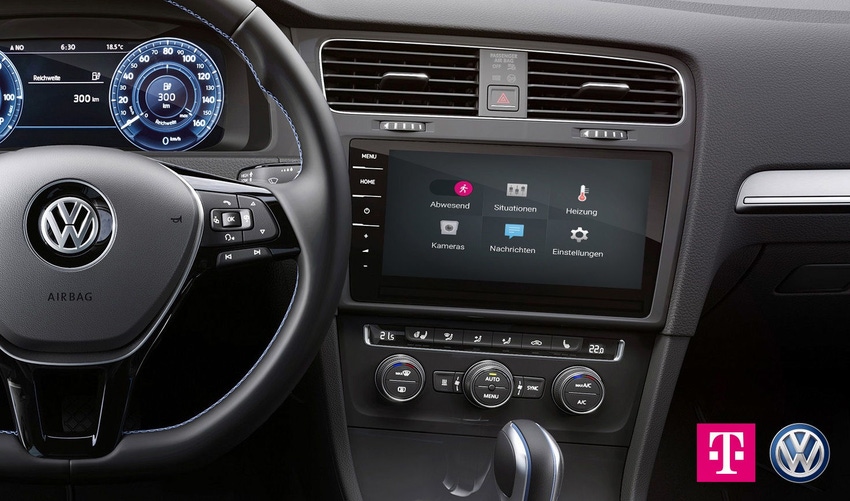These emerging services point the way to a new and incredibly potent upcoming market for service providers - the untapped potential to deliver new services direct to consumer is almost unparalleled in modern society.
November 13, 2017

Telecoms.com periodically invites expert third parties to share their views on the industry’s most pressing issues. In this piece Thomas Rockmann, VP Connected Home at Deutsche Telekom looks at how operators can exploit the connected car opportunity.
Amazingly, it has been 21 years since the first connected cars rolled off the production line (GM’s OnStar was an emergency service built into the Cadillac DeVille, Seville and Eldorado), but the promise to revitalise automotive sales and deliver significant user benefits alike has never been stronger than right now.
Automotive connectivity has never been more popular, and it is really a one-way street – analysts from Research and Markets predict that while the overall connected car market registered a shipment of 5.1 Million units in 2015, the market is expected to reach 37.7 Million units by 2022, at a CAGR of 35.54% between 2016 and 2022.
Excitingly, this surge in connectivity will not only transform the way we travel, and our expectations of the services we will consumer in the process, but will also rapidly begin to dictate and reshape the cities and towns in which we live, as well as our homes themselves.
Consider for a moment the world of pure-play electric vehicles (EVs), recently given a huge boost by UK and European announcements of a far-reaching ‘ban’ on their fossil-fuel brethren by 2040 in order to meet pollution quotas. The chargers required for EVs in the UK have rocketed – there are now 4,887 locations which have a public charging point installed in the UK, and the number of high-power ‘rapid chargers’ has increased from just 30 in 2011 to more than 2,100 by the end of 2016. Meanwhile, the number of traditional petrol station sites has fallen since 2000 by over 34 per cent. In short, the transformation of the UK’s road transport network has already begun, and the rising requirement for connectivity will inevitably have a similar impact.
Of course, there are thousands of hybrid and fully electric vehicles (EVs) on the roads today, and many more thousands of fossil-fuelled vehicles with a data connection. Up until now, these connections have been used for diagnostic and telematic information, and for location and tracking-style applications, but are also recently now being used for non-core motoring functions that require more significant bandwidth and higher data rates.
From the burgeoning range of consumer digital services, including entertainment, digital payments, mapping and navigation, communications, productivity applications across verticals from health to finance, and a significant wave of mobility services, connected vehicles are one of the newest and most numerous software platforms around.
As usual, there will be a series of stages on this road, because of the considerable product timeline disparities – vehicle replacement cycles are typically between five and seven years compared to a phone handset at under two years – smartphone-mirroring solutions create a bridge between the two worlds. This is why smartphone mirroring service is popular with consumers in the immediate term, as it fulfils a use case as well as delivering a familiar interface, but this will not always be the case.
An excellent topical example is Deutsche Telekom’s partnership with Volkswagen, which centres around Volkswagen’s Car-Net App Connect, recently showcased at the IFA technology show in Berlin (September 1-6). The integration means that car owners can seamlessly control their Magenta SmartHome, which is based on Deutsche Telekom’s open, white label smart home platform, while away from home.
Volkswagen drivers will be able to control their Magenta SmartHome directly via their vehicle’s infotainment system. Using the control panel, the driver can activate or turn off pre-set scenarios while driving. For example, for the scenario “coming home”: the lights in the driveway and house entrance turn on automatically when the vehicle approaches, as the Magenta SmartHome app connects to the vehicle. All they need is an Android smartphone with MirrorLink technology and the Volkswagen Car-Net App-Connect.
There are a variety of core challenges to growing this new market – consumers will continue to expect digital services to function consistently across all connected devices and platforms, as well as deliver seamless service continuity. For example, a streamed program will need to play on their living room screen or phone handset from precisely where the customer left it on their connected car screen. Telcos have long espoused this ‘liquid mobility’ concept and now, with the connected car, another platform has entered the mix.
Although smartphone-mirroring services still have a role to play, as in-car technology develops to become more interactive via touch screens and voice commands, and in turn evolve to become fully autonomous, driverless vehicles, then the solutions will need to evolve and become more platform-specific. Developments in this human–machine interface (HMI) that enhance voice interfaces, involve biometrics, AR and, in the longer term, VR can be expected. Biometrics especially will become increasingly used for personalisation, as well as security and safety features, such as drowsiness monitoring.
This augmented hardware will spur a vast increase in the numbers of services available, as manufacturers and existing incumbents seek market differentiation. The rise of the sharing economy brings obvious in-car monetisation possibilities – why pay for parking when a nearby family needs to rent a car for an hour? Extending current ride-share and short-term car rental offerings into real-time is already underway, and will reach a consumer level in the immediate future.
Other vital challenges include the additional complexity of digital service delivery and management, as well as integration and interoperability roadblocks, and of course security issues – more potent here than in other, less highly regulated industries. However, the opportunities for successfully innovating around this bright sector are almost boundless – welcome to the beginning of the future!
 Thomas Rockmann is Vice President of Connected Home, Deutsche Telekom’s white label smart home portfolio and joint-CEO of the group-wide smart home project. Thomas is responsible for all aspects of the Connected Home business and has been instrumental in growing the business and delivering the white label solution with different partners across Europe. Thomas joined Deutsche Telekom in 2000 as the group’s senior innovation manager for product lifecycle management, where he conceptualized and launched Deutsche Telekom’s product lifecycle management process and SAP tool, which today enables Deutsche Telekom to deliver products in a standardized way for all consumer customers. He also undertook the role as the commissioner for quality management in marketing and sales of T-Com.
Thomas Rockmann is Vice President of Connected Home, Deutsche Telekom’s white label smart home portfolio and joint-CEO of the group-wide smart home project. Thomas is responsible for all aspects of the Connected Home business and has been instrumental in growing the business and delivering the white label solution with different partners across Europe. Thomas joined Deutsche Telekom in 2000 as the group’s senior innovation manager for product lifecycle management, where he conceptualized and launched Deutsche Telekom’s product lifecycle management process and SAP tool, which today enables Deutsche Telekom to deliver products in a standardized way for all consumer customers. He also undertook the role as the commissioner for quality management in marketing and sales of T-Com.
Read more about:
DiscussionAbout the Author(s)
You May Also Like








.png?width=300&auto=webp&quality=80&disable=upscale)


_1.jpg?width=300&auto=webp&quality=80&disable=upscale)


.png?width=800&auto=webp&quality=80&disable=upscale)